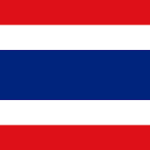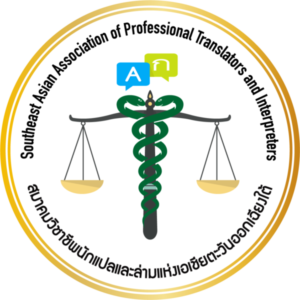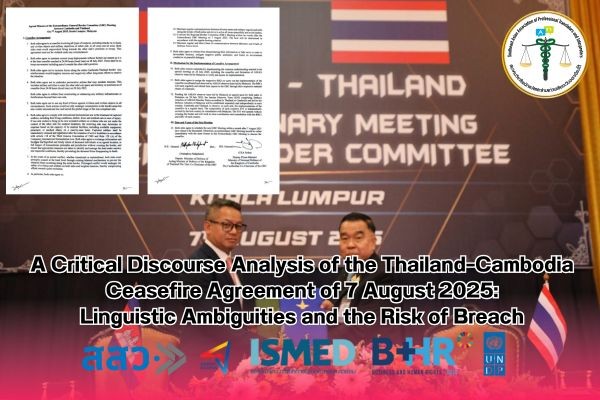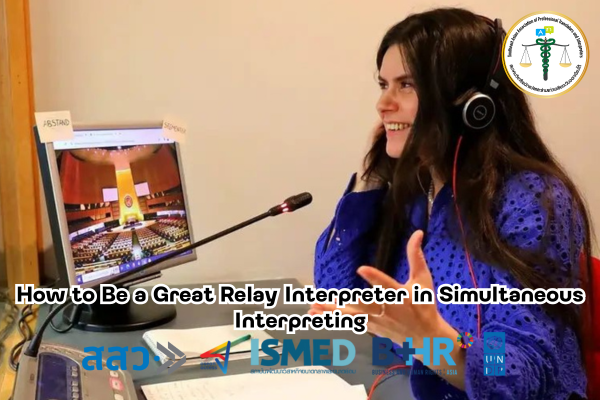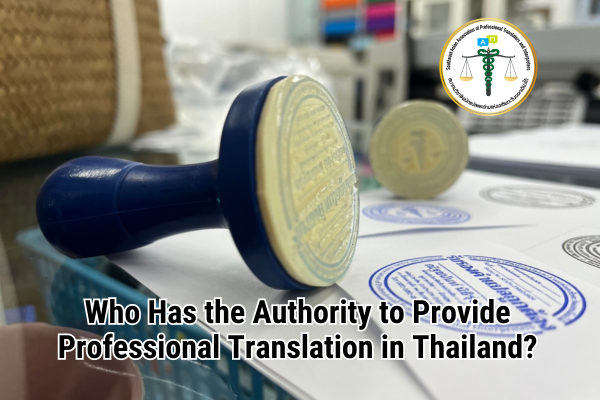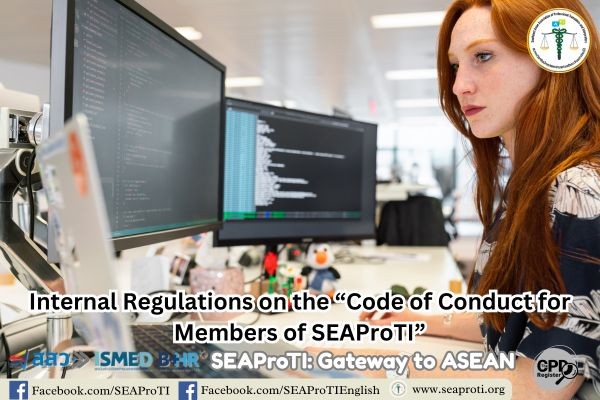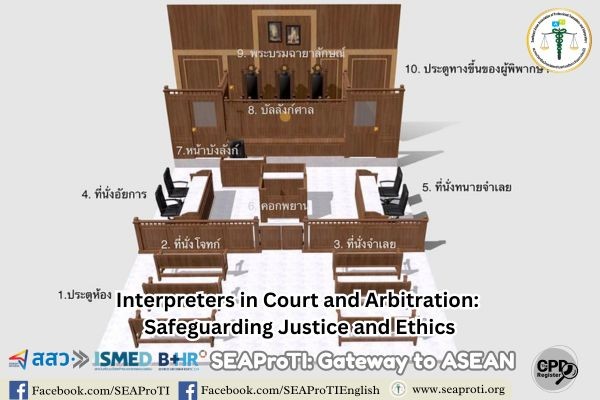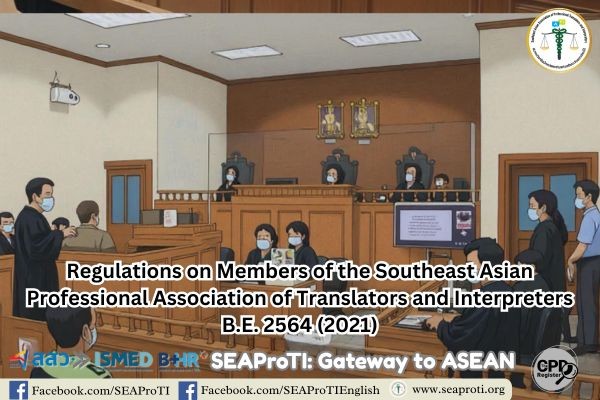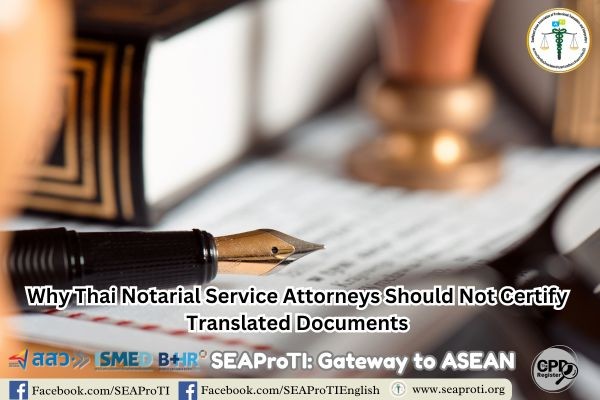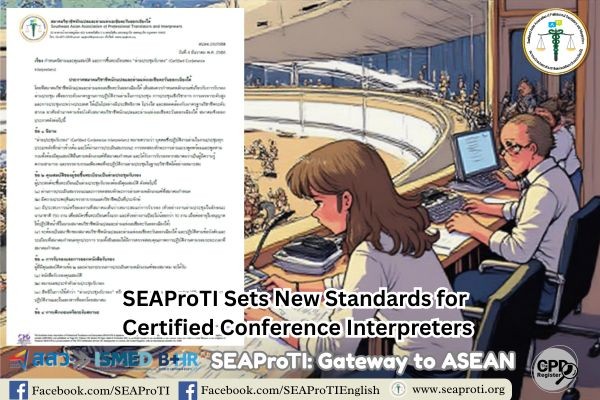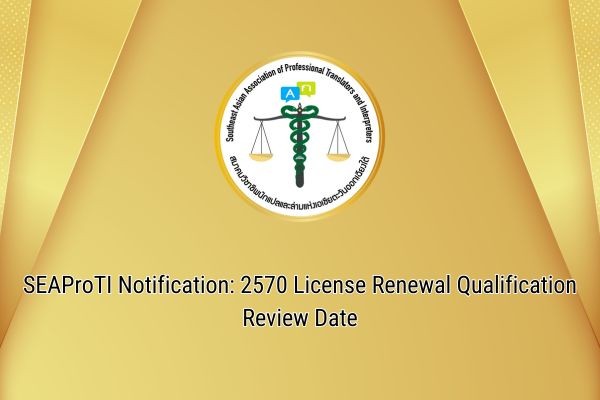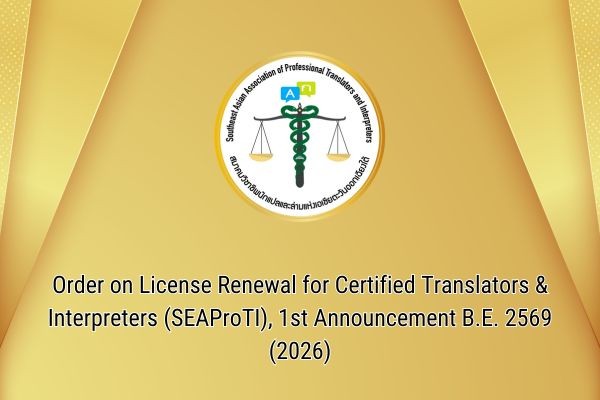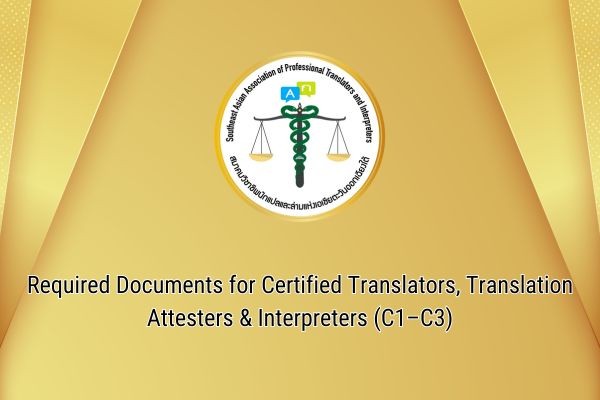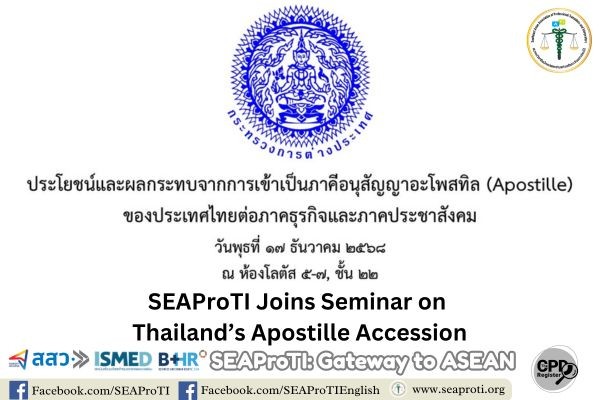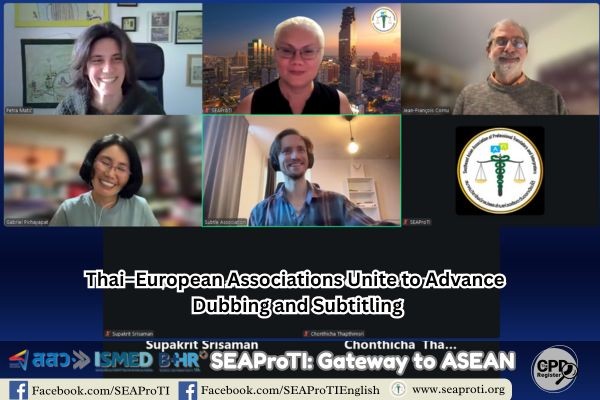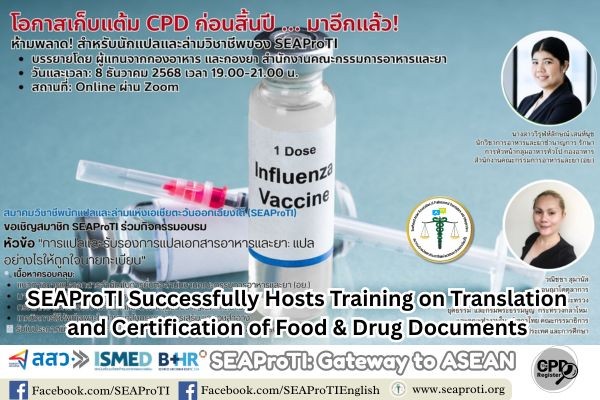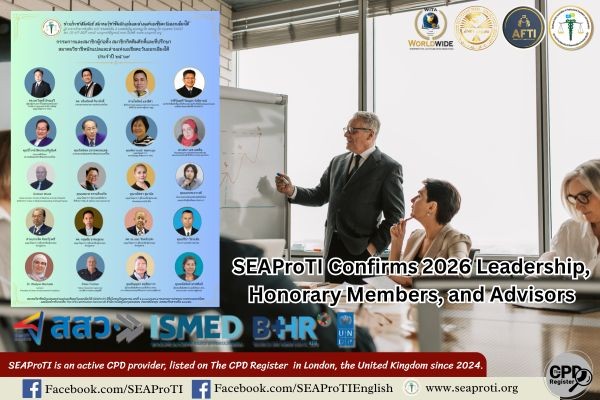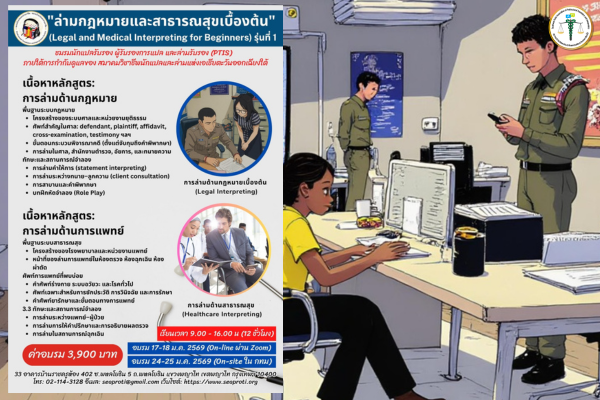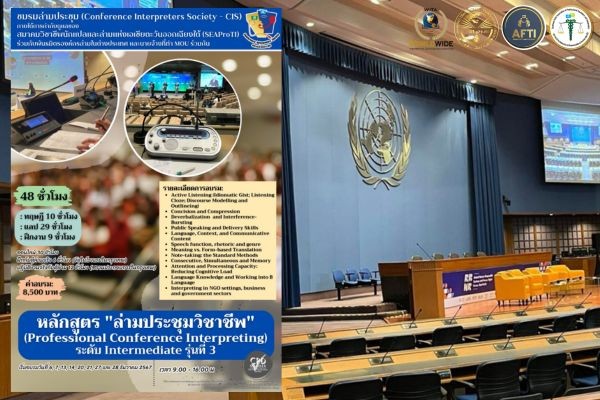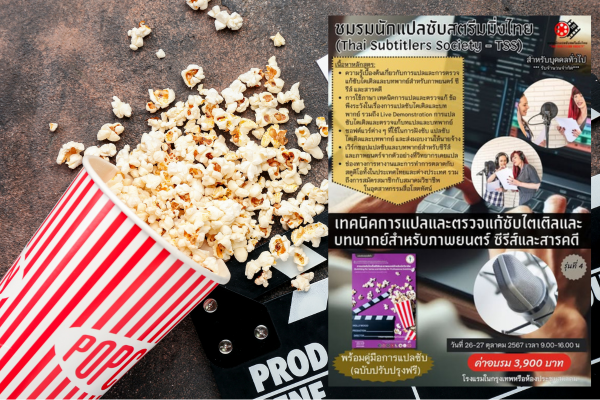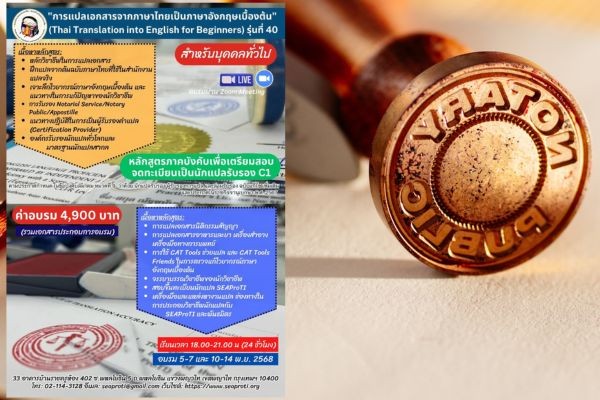A Critical Discourse Analysis of the Thailand–Cambodia Ceasefire Agreement of 7 August 2025:
Linguistic Ambiguities and the Risk of Breach
By Wanitcha Sumanat, President, Southeast Asian Association of Professional Translators and Interpreters (SEAProTI)
8 August 2025, Bangkok – This article applies the framework of Critical Discourse Analysis (CDA) to examine the ceasefire agreement signed between the Thai and Cambodian governments during the General Border Committee (GBC) Meeting held on 7 August 2025 in Kuala Lumpur, Malaysia. It focuses on analyzing the linguistic structures, ideologies, and opportunities for either party to exploit the wording of the agreement to commit acts that violate the spirit if not the letter of the accord. Findings reveal that while the agreement emphasizes cooperation and international humanitarian principles, the diplomatic language used is vague, lacks enforcement mechanisms, and is open to multiple interpretations. These factors potentially enable strategic manipulation of legal grey zones particularly in disputed areas without clearly demarcated borders.
The border clashes between Thailand and Cambodia in mid-2025 led to an urgent ceasefire and the convening of an Extraordinary General Border Committee (GBC) Meeting. The resulting agreement, signed on 7 August 2025, serves as a framework for managing military conflict under international norms. This article examines the agreement using a Critical Discourse Analysis (CDA) lens to explore how language is employed to establish legitimacy, manage public perception, and obscure asymmetrical power dynamics—while identifying how the wording can be interpreted in ways that justify potential violations.
Framework and Methodology
Critical Discourse Analysis (CDA), following Fairclough (1995), aims to expose the interrelations between language, power, and ideology. It views language as a non-neutral tool capable of legitimizing domination and control. CDA operates on three analytical levels: (1) textual analysis, (2) discursive practice, and (3) social practice.
This article analyzes the text of the GBC agreement by focusing on key terminologies, diplomatic phrasing, syntactic structures, and the avoidance of legally binding language. It further examines how such language allows space for conflicting interpretations and potentially strategic violations.
Findings and Analysis
The Rhetoric of “Symmetry” and Underlying Power Structures
Although the agreement repeatedly uses the phrase “Both sides agree…” to signal parity, the actual structure lacks mechanisms for verifying balance—such as independent reporting, precise definitions, or consequences for non-compliance. For example, Clause 8.2 requires the convening of a Regional Border Committee (RBC) meeting within two weeks but does not outline any penalties if a party postpones or fails to attend. The role of neutral third-party mediation is also unspecified, leaving space for disputes over factual claims or interpretations.
Diplomatic Ambiguities and Tactical Flexibility
The language of the agreement deliberately avoids binding legal terminology, favoring softer phrases like “shall be encouraged,” “case-by-case basis,” or “based on capacity.” Such expressions enable parties to evade obligations by citing technical limitations or contextual nuances.
For instance, Clause 6 addresses the return of wounded or deceased individuals but allows the receiving side to decide based on its own “medical capacity” and “medical ethics”, undefined terms that could justify refusal under pretext.
Monitoring Gaps in Disputed Territories
Although an Interim Observer Team (IOT) is established, it is explicitly stated that the team “will operate without crossing the border.” This means that contested border areas, by nature undefined, fall outside the observation scope, creating blind spots. A party could exploit this gap to construct new military outposts or deploy special units without detection or oversight.
Policy Recommendations
- Key terms such as “troop movement,” “civilian objects,” or “provocative action” must be clearly defined in future agreements.
- The agreement should include specific enforcement mechanisms or penalties for non-compliance.
- Observation mechanisms must be restructured to ensure independent access to disputed areas.
- The role of international observers should be strengthened beyond reporting, with the capacity to issue formal findings or escalate reports to international bodies.
Conclusion
The 7 August 2025 Thailand–Cambodia ceasefire agreement represents a diplomatic effort toward peace building through the language of cooperation. However, a CDA perspective reveals that the agreement prioritizes international image over enforceable commitments. Several linguistic loopholes allow parties to breach the agreement “legitimately” through interpretive maneuvering. A more precise legal language, robust monitoring framework, and empowered third-party involvement are essential to ensure that language serves as a tool for peace, and not for domination and ambiguity.
References
- Fairclough, N. (1995). Critical Discourse Analysis: The Critical Study of Language. London: Longman.
- Geneva Convention Relative to the Treatment of Prisoners of War. (1949). United Nations. https://www.un.org/en/genocideprevention/documents/atrocity-crimes/Doc.30_GC-III-EN.pdf
- United Nations Office for the Coordination of Humanitarian Affairs. (2006). Customary International Humanitarian Law: Volume I. Cambridge University Press.
- General Border Committee. (2025, August 7). Agreed Minutes of the Extraordinary General Border Committee Meeting between Cambodia and Thailand. Kuala Lumpur, Malaysia.
About SEAProTI Certified Translators, Certification Providers, and Interpreters
The Southeast Asian Association of Professional Translators and Interpreters (SEAProTI) has published official guidelines and eligibility criteria for individuals seeking registration as Certified Translators, Translation Certification Providers, and Certified Interpreters under Chapter 9 and Chapter 10 of the Royal Thai Government Gazette, issued by the Secretariat of the Cabinet, Office of the Prime Minister, on 25 July 2024 (Vol. 141, Part 66 Ng, p. 100).
Full text available at: Certified Translators, Certification Providers, and Certified Interpreters.
การวิเคราะห์เชิงวาทกรรมวิพากษ์ของข้อตกลงหยุดยิงไทย–กัมพูชา 7 สิงหาคม 2568: ช่องโหว่ทางภาษากับความเสี่ยงของการละเมิด
โดย วณิชชา สุมานัส นายกสมาคมวิชาชีพนักแปลและล่ามแห่งเอเชียตะวันออกเฉียงใต้
8 สิงหาคม 2568, กรุงเทพมหานคร – บทความนี้ใช้กรอบการวิเคราะห์เชิงวาทกรรมวิพากษ์ (Critical Discourse Analysis – CDA) เพื่อศึกษา ข้อตกลงหยุดยิงระหว่างรัฐบาลไทยและกัมพูชา ที่ลงนามระหว่างการประชุมคณะกรรมการชายแดนทั่วไป (General Border Committee – GBC) เมื่อวันที่ 7 สิงหาคม 2568 ณ กรุงกัวลาลัมเปอร์ ประเทศมาเลเซีย โดยมุ่งวิเคราะห์โครงสร้างทางภาษา อุดมการณ์ และโอกาสที่คู่พิพาทฝ่ายใดฝ่ายหนึ่งจะใช้ ช่องโหว่ของถ้อยคำในข้อตกลงเพื่อดำเนินการที่อาจละเมิดข้อตกลงโดยไม่ถือว่าผิดเงื่อนไข ข้อค้นพบชี้ให้เห็นว่า แม้ข้อตกลงดังกล่าวจะเน้นย้ำความร่วมมือและหลักมนุษยธรรมระหว่างประเทศ แต่กลับมีลักษณะการใช้ภาษาทางการทูตที่คลุมเครือ ขาดกลไกบังคับใช้ที่ชัดเจน และเปิดช่องให้ตีความได้หลายทาง ซึ่งอาจนำไปสู่การใช้ประโยชน์ทางยุทธศาสตร์จาก “พื้นที่สีเทาทางกฎหมาย” โดยเฉพาะในพื้นที่พิพาทที่ไม่มีเส้นเขตแดนชัดเจน
บทนำ
การสู้รบชายแดนระหว่างไทย–กัมพูชาในช่วงกลางปี 2568 นำไปสู่การหยุดยิงและการจัดประชุมคณะกรรมการชายแดนทั่วไป (General Border Committee – GBC) อย่างเร่งด่วน การเจรจาดังกล่าวเกิดขึ้นท่ามกลางแรงกดดันจากประชาคมอาเซียนและนานาชาติ โดยข้อตกลงที่ได้ลงนามเมื่อวันที่ 7 สิงหาคม 2568 ถือเป็นกรอบการบริหารสถานการณ์ความขัดแยงทางทหารภายใต้กฎเกณฑ์ระหว่างประเทศ บทความนี้วิเคราะห์ข้อตกลงดังกล่าวผ่านกรอบแนวคิดวาทกรรมวิพากษ์ เพื่อพิจารณาว่า มีการใช้ “ภาษา” ในข้อตกลงเพื่อสร้างความชอบธรรม การควบคุมภาพลักษณ์ และการบดบังอำนาจอย่างไร อีกทั้งพิจารณาช่องทางที่ภาษาดังกล่าวอาจถูกใช้ในการ “ละเมิดอย่างชอบธรรม”
กรอบแนวคิดและระเบียบวิธี
การวิเคราะห์วาทกรรมเชิงวิพากษ์ (CDA) ตามแนวของ Fairclough (1995) มีจุดประสงค์เพื่อเปิดโปงความสัมพันธ์ระหว่างภาษา อำนาจ และอุดมการณ์ โดยเน้นว่า “ภาษาไม่เป็นกลาง” แต่เป็นเครื่องมือสร้างอำนาจ การครอบงำ หรือความชอบธรรมในสังคม CDA จึงมุ่งวิเคราะห์ 3 ระดับ ได้แก่ (1) ข้อความ (text) (2) การปฏิบัติของวาทกรรม (discursive practice) และ (3) บริบททางสังคม (social practice)
บทความนี้ใช้วิธีการวิเคราะห์ข้อความจากข้อตกลง GBC โดยเน้นคำศัพท์หลัก สำนวนทางการทูต รูปแบบประโยค และการหลีกเลี่ยงถ้อยคำที่ผูกพันเชิงกฎหมาย รวมถึงการพิจารณาว่า เนื้อหาในข้อตกลงเปิดช่องให้มีการตีความในทางที่อาจนำไปสู่การละเมิดได้อย่างไร
ผลการวิเคราะห์
วาทกรรม “สมานฉันท์” ที่แฝงด้วยโครงสร้างอำนาจ
แม้ข้อตกลงจะใช้ถ้อยคำซ้ำ ๆ ว่า “Both sides agree…” เพื่อแสดงความสมดุล (symmetry) แต่ลักษณะการเขียนกลับไม่ปรากฏกลไกตรวจสอบความเท่าเทียม เช่น การระบุบทลงโทษ การรายงานอย่างเป็นอิสระ หรือการนิยามคำสำคัญให้รัดกุม
ตัวอย่างเช่น ข้อ 8.2 ระบุว่า จะมีการจัด “Regional Border Committee (RBC) Meeting” ภายในสองสัปดาห์แต่ไม่ระบุบทลงโทษหากฝ่ายใดฝ่ายหนึ่งเลื่อน หรือไม่เข้าร่วมโดยไม่มีเหตุอันควร นอกจากนี้ ไม่มีการกำหนดบทบาทฝ่ายที่เป็นคนกลางอย่างละเอียด หากมีข้อขัดแย้งเรื่องข้อเท็จจริงหรือการตีความของข้อตกลง
ช่องโหว่ทางภาษาและกลยุทธ์ทางการทูต
ถ้อยคำในข้อตกลงมีลักษณะหลีกเลี่ยงภาษากฎหมายที่ผูกพัน เช่น ใช้คำว่า “shall be encouraged”, “case-by-case basis”, หรือ “based on capacity” ซึ่งช่วยให้ฝ่ายที่ต้องการหลีกเลี่ยงพันธะสามารถใช้เหตุผลทางเทคนิคหรือบริบทเฉพาะในการปฏิเสธความรับผิดได้
ตัวอย่างเช่น ข้อ 6 กล่าวถึงการส่งกลับผู้บาดเจ็บหรือศพ โดยเปิดโอกาสให้คู่พิพาทรับพิจารณาตาม “capacity” และ “medical ethics” ซึ่งไม่มีนิยามหรือมาตรฐานกลาง ทำให้ฝ่ายใดฝ่ายหนึ่งสามารถปฏิเสธได้โดยอ้างข้อจำกัดต่าง ๆ
ช่องว่างในเรื่องการสังเกตการณ์ (Monitoring Gap)
แม้มีการจัดตั้ง “Interim Observer Team (IOT)” แต่กลับระบุชัดว่า “will operate without crossing the border” ซึ่งเท่ากับว่าพื้นที่ชายแดนที่เป็นข้อพิพาทโดยธรรมชาติจะตกอยู่นอกเหนือเขตการสังเกตการณ์โดยสิ้นเชิง ทำให้เกิดช่องว่างที่ฝ่ายใดฝ่ายหนึ่งสามารถดำเนินยุทธวิธี เช่น ก่อสร้างฐานทัพใหม่หรือส่งหน่วยพิเศษ โดยไม่มีการตรวจพบหรือตรวจสอบได้
ข้อเสนอเชิงนโยบาย
- ข้อตกลงลักษณะนี้ควรมีการ นิยามคำหลักอย่างชัดเจน เช่น “troop movement”, “civilian objects”, หรือ “provocative action”
- ควรเพิ่ม บทลงโทษหรือกลไกยุติข้อพิพาท ที่สามารถใช้ในกรณีที่ฝ่ายใดไม่ปฏิบัติตามข้อตกลง
- จำเป็นต้องมีการออกแบบกลไกสังเกตการณ์ที่สามารถเข้าถึงพื้นที่พิพาทได้อย่างเป็นอิสระ
- ต้องเสริมสร้างบทบาทของผู้สังเกตการณ์นานาชาติให้เป็นมากกว่า “การทำรายงาน” โดยควรมีอำนาจเสนอข้อวินิจฉัยหรือส่งต่อข้อมูลต่อองค์กรระหว่างประเทศ
สรุป
ข้อตกลงหยุดยิงไทย–กัมพูชา เมื่อวันที่ 7 สิงหาคม 2568 แสดงให้เห็นถึงความพยายามฟื้นฟูสันติภาพผ่านรูปแบบการใช้ภาษาที่ส่งเสริมความร่วมมือ (language of collaboration) ทว่าในเชิงวาทกรรม กลับสะท้อนอุดมการณ์ที่มุ่งเน้นภาพลักษณ์มากกว่าการข้อผูกพันที่สามารถบังคับใช้ตามกฎหมายหรือข้อตกลงได้จริง (enforceable commitments) และมีช่องโหว่หลายจุดที่อาจถูกใช้ในการละเมิดข้อตกลงอย่าง “ถูกต้องตามวาทกรรม” การออกแบบข้อตกลงที่มีภาษารัดกุม กลไกตรวจสอบที่มีประสิทธิภาพ และการสังเกตการณ์ที่ครอบคลุมจึงเป็นสิ่งจำเป็นในการป้องกันไม่ให้ภาษากลายเป็นเพียงเครื่องมือของการครอบงำและบิดเบือน
เอกสารอ้างอิง
- Fairclough, N. (1995). Critical Discourse Analysis: The Critical Study of Language. London: Longman.
- Geneva Convention Relative to the Treatment of Prisoners of War. (1949). United Nations. https://www.un.org/en/genocideprevention/documents/atrocity-crimes/Doc.30_GC-III-EN.pdf
- United Nations Office for the Coordination of Humanitarian Affairs. (2006). Customary International Humanitarian Law: Volume I. Cambridge University Press.
- General Border Committee. (2025, August 7). Agreed Minutes of the Extraordinary General Border Committee Meeting between Cambodia and Thailand. Kuala Lumpur, Malaysia.
เกี่ยวกับนักแปลรับรอง ผู้รับรองการแปล และล่ามรับรองของสมาคมวิชาชีพนักแปลและล่ามแห่งเอเชียตะวันออกเฉียงใต้
สมาคมวิชาชีพนักแปลและล่ามแห่งเอเชียตะวันออกเฉียงใต้ (SEAProTI) ได้ประกาศหลักเกณฑ์และคุณสมบัติผู้ที่ขึ้นทะเบียนเป็น “นักแปลรับรอง (Certified Translators) และผู้รับรองการแปล (Translation Certification Providers) และล่ามรับรอง (Certified Interpreters)” ของสมาคม หมวดที่ 9 และหมวดที่ 10 ในราชกิจจานุเบกษา ของสำนักเลขาธิการคณะรัฐมนตรี ในสำนักนายกรัฐมนตรี แห่งราชอาณาจักรไทย ลงวันที่ 25 ก.ค. 2567 เล่มที่ 141 ตอนที่ 66 ง หน้า 100 อ่านฉบับเต็มได้ที่: นักแปลรับรอง ผู้รับรองการแปล และล่ามรับรอง
